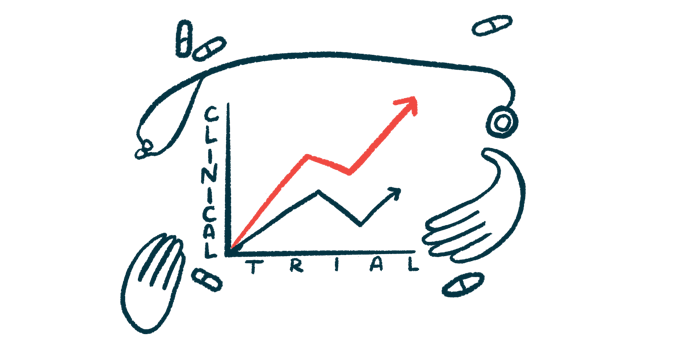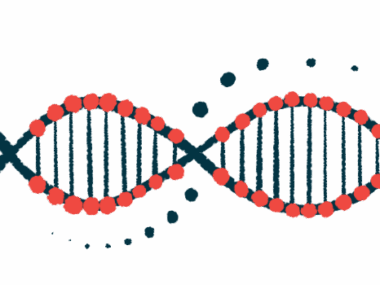Gene Therapy Gel, Vyjuvek, Effectively Heals RDEB Wounds in Phase 1/2 Trial
Written by |

Vyjuvek, a gene therapy gel (previously called B-VEC) by Krystal Biotech, safely and effectively improved wound healing in children and adults with recessive dystrophic epidermolysis bullosa (RDEB), according to data from a Phase 1/2 clinical trial.
Importantly, resolved wounds remained closed for at least three months and up to eight months.
These findings, along with positive preclinical data obtained before the trial, were detailed in the study “In vivo topical gene therapy for recessive dystrophic epidermolysis bullosa: a phase 1 and 2 trial,” published in the journal Nature Medicine.
“The wounds heal quickly but, even more importantly, they stay closed,” Peter Marinkovich, MD, the study’s senior author and the director of the blistering disease clinic at Stanford University School of Medicine — where the trial took place — said in a university press release.
“The therapy strengthens the skin and breaks the painful and destructive cycle of wound opening and closing that patients with epidermolysis bullosa experience,” added Marinkovich, who is also an associate professor of dermatology at Stanford Medicine.
“We saw no problems with repeated administration of the gel, and the patients and their families were very enthusiastic about the results,” he said.
Notably, in a subsequent and larger Phase 3 trial, called GEM-3 (NCT04491604), Vyjuvek has also showed promise in DEB patients, and Krystal plans to file for the therapy’s approval in the U.S. in upcoming months. A similar application in Europe is expected to soon follow.
“I’m excited that, if approved for clinical use by the Food and Drug Administration, we will be able to reach many more patients with this devastating disease,” Marinkovich said.
Dystrophic epidermolysis bullosa is one of the major forms of epidermolysis bullosa, characterized by blisters that often leave scars when they heal or that progress to severely painful open wounds.
It is caused by mutations in the COL7A1 gene, which provides the instructions to produce type VII collagen (COL7), a protein key for the adhesion between the outer and middle layers of the skin. In its recessive, more severe form, a child has to inherit two mutated copies (one from the mother, and the other from the father) to develop full-blown DEB.
For more than a decade, researchers at Stanford Medicine have been working on therapies designed to deliver an intact copy of the COL7A1 gene to RDEB patients. In 2016, Marinkovich and his colleagues showed that transplanting RDEB patients with their own genetically corrected skin grafts was generally safe and improved their wound healing.
However, engineering and growing the grafts was laborious, and their application required surgery with general anesthesia, followed by a week of follow-up in the hospital.
Vyjuvek, a re-dosable gene therapy gel, can be topically applied without specialized expertise during routine bandage changes — a key advantage for patients in areas where access to specialized medical care is limited, Marinkovich said.
The gel uses a modified and harmless herpes simplex virus to deliver two healthy copies of the COL7A1 gene directly to wounds. The working gene allows skin cells to produce a working COL7 protein, helping wounds to heal and preventing skin blistering.
Notably, unlike many other viruses used for gene therapy, the herpes simplex virus does not integrate into a cell’s genome, eliminating the slight risk of such integration changing normal gene activity and lead to cancer.
Before testing the therapy in RDEB patients, Marinkovich and colleagues, along with Krystal, confirmed that Vyjuvek restored COL7 in lab-grown skin cells from RDEB patients, a mouse model of RDEB, and skin grafts from RDEB patients grown in mice.
The Phase 1/2 trial, called GEM-1 (NCT03536143), evaluated Vyjuvek’s safety and effectiveness in six adults (five men and one woman) and three children (two boys and one girl) with RDEB.
Matched wounds in each patient were treated with either Vyjuvek or a placebo gel, most commonly every two to three days to correspond with bandage changes, for 12 weeks (about three months).
Results showed that all Vyjuvek-treated wounds closed and remained healed for at least three months, with the exception of a chronic, 5-year-old wound on a foot.
This wound partly closed within one month of treatment, was completely resolved upon re-treatment and remained closed throughout eight months of monitoring.
In contrast, the wounds treated with the placebo gel healed and re-blistered at variable rates throughout the trial.
In addition, two lateral four-year-old wounds on the chest of a 10-year-old boy were treated with two, 25-day cycles of either Vyjuvek or a placebo gel. The Vyjuvek-treated wound was reduced by 70%, while that given the placebo gel showed only a 34% reduction.
Biopsies of Vyjuvek-treated wounds from seven patients showed the presence of the COL7 protein, as well as its correct location, as early as nine days after treatment initiation, and for at least three months in one case.
These findings suggested that “topical application of [Vyjuvek] improves RDEB wound healing, specifically, in the clinically meaningful terms of complete wound closure, time to wound closure and durability of wound closure,” the researchers wrote.
The therapy was generally safe, with trial participants experiencing few and mostly mild adverse events. Antibodies against the viral carrier and/or COL7 were detected before study’s start or increased after Vyjuvek treatment in some patients, but this did not appear to affect safety or efficacy.
Data demonstrate that Vyjuvek “is an easily administered, safely tolerated, topical molecular corrective therapy promoting wound healing in patients with RDEB,” the researchers wrote.
“Given that new trauma to other areas of skin can cause new blisters outside of previously treated wounds, it is anticipated that periodic [Vyjuvek] dosing of new wounds outside of previously treated wound areas will be necessary,” they added.






